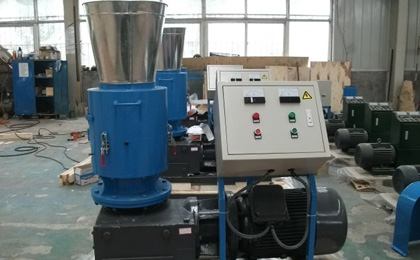According to the latest market forecast of the International Energy Agency (IEA), modern bio-energy will become the largest increase in renewable energy between 2018 and 2023. Only part of the bio-energy for electricity will increase by 38GW during the five-year period to 158GW, which is expected to be 2023. Bioenergy will meet about 3% of global electricity demand. The International Energy Agency believes that China's prospects are more optimistic, and China is expected to account for 37% of global bioenergy.
From the reality of our country, biomass power generation still accounts for only a small proportion. According to statistics, China's renewable energy generation in 2017 was 1,697.9 billion kWh, of which biomass power generation was 79.5 billion kWh, accounting for 1.2% of total power generation. National biomass power generation installed capacity was 2.74 million kilowatts, and cumulative installed capacity reached 14.88 million. kilowatt.
However, this does not negate the important value of biomass power generation in China's renewable energy power generation system. As a high-quality form of power generation, biomass power generation can not only alleviate the situation of power shortage in China, but also reduce the waste caused by waste biomass. Environmental Pollution. Biomass power generation finds an effective way for efficient use of biomass and has great potential for development in the next decade.
The proportion of biomass power generation in 2030 may exceed 5%

"According to the current development situation, the proportion of biomass power generation exceeding 5% by 2030 is not a problem." Biomass power generation uses biomass energy from biomass to generate electricity, which is divided into direct combustion power generation, mixed combustion power generation, and biomass. Different types of gasification power generation and biogas power generation. From the development history and situation of biomass power generation in China, it is not difficult to reach the proportion of this forecast in the next decade.
In 2005, China passed the Renewable Energy Law, which greatly promoted the development of biomass power generation. With the support of relevant policies, the biomass power generation industry has become the third largest industry after relaying wind power and photovoltaics in the renewable energy field. China's biomass power generation capacity has grown from 1.5 million kilowatts in 2003 to nearly 1,500 kilowatts today. In the past two years, due to resource constraints, the growth rate of biomass power generation has stabilized at around 10%.
According to the National Energy Administration's 13th Five-Year Plan for Biomass Energy Development, by 2020, biomass energy will be basically commercialized and scaled up. The annual biomass utilization is about 58 million tons of standard coal. The total installed capacity of biomass power generation reaches 15 million kilowatts, and the annual power generation capacity is 90 billion kilowatt-hours, of which 7 million kilowatts of direct-fired biomass for agricultural and forestry biomass, 7.5 million kilowatts of municipal solid waste incineration, and 500,000 kilowatts of biogas power generation; annual utilization of biological natural gas 8 billion cubic meters; the annual utilization of bio-liquid fuel is 6 million tons; the annual utilization of biomass-forming fuel is 30 million tons. The industry analysts believe that China's biomass power generation will be divided into two stages, the first stage is mainly the development and improvement of biomass power generation technology, some of the better economic technology began to enter commercial use; the second stage of biomass will gradually As one of the main energy sources, with the gradual improvement and maturity of biomass power generation technology, biomass will have the conditions to compete with fossil fuels.
In terms of international experience, biomass accounts for a very high proportion of energy supply in many countries. According to the International Energy Agency, by 2020, 15% of electricity in Western industrial countries will come from biomass power generation. The advantage of China's biomass industry development lies in a wide range of biomass resources, mainly crop straw and forestry waste, as well as urban domestic waste. With the development of technology over the years, China has basically formed a biomass power generation industry system, and various regions are also planning to carry out the development and exploration of the biomass power generation industry.






